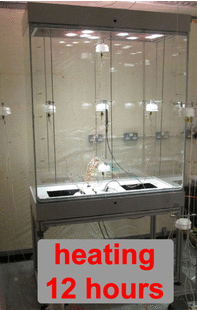James Crawford
| Welcome to this introduction to my research with Analytical Science Projects (ASP) in the University of Warwick’s Department of Physics. |  |
|||
| Making a contribution to the preservation of cultural heritage is the overriding objective of my thesis; to this end I formed an industrial collaboration between the University and ClickNetherfield, a major conservation display case manufacturer in the United Kingdom. |
Stable microclimates as sustainable solutions for preserving cultural heritage artefacts
Upgrading the passive display case
| Prevention is better than cure: it has long been known that microclimates made of benign atmospheres provide ideal environments to safeguard cultural heritage artefacts for future generations. | Passive display cases are less costly and consume less energy than active ones: with electric-powered environmental conditioning. Knowledge of how air is transported to and from display case interiors is fundamental to the preservation of significant and vulnerable cultural heritage artefacts worthy of display. | Studying air exchange mechanisms of commercially available passive displays loaned by ClickNetherfield Ltd is underway with the aim of controlling this air exchange. |
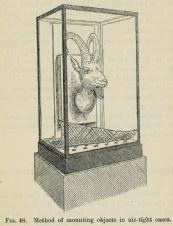 |
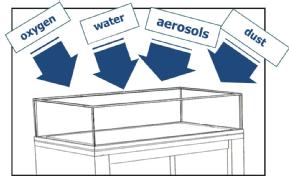 |
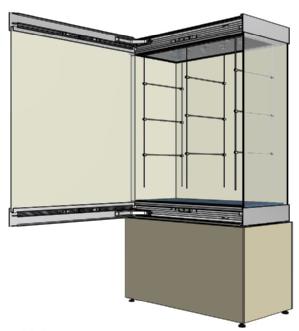 |
| An "air-tight" display case in the 1932 English translation of F. Rathgen's "The Preservation of Antiquities. A Handbook for Curators" (1905) | Some of the components from the external atmosphere which eventually penetrate display cases |
A case with its vertically-hinged door - a popular configuration for heritage collections, but is susceptible to "stack effect" (image: ClickNetherfield Ltd) |
By controlling airtightness according to the conservation needs of the exhibits, display cases can be filtered or ventilated in a regulated manner. Engineering the airtightness of cases is key, and to measure this parameter two methods are being used:
- Measurement of the dilution of a tracer gas (CO2 added to an elevated concentration) over time, and
- Measurement of the positive or negative pressure differentials caused by the measured airflow into (i.e. pressurisation) or out of (i.e. depressurisation) cases.
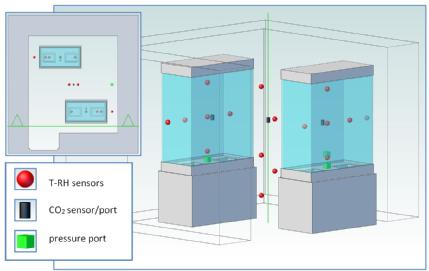 |
|
| An orthographic-view (main) and plan perspective (overlay) of the 20 m3 thermally-stable test-room with two display cases and the distribution of environment and tracer gas sensors |
Under test: a 1 m3 industry-produced display case with unframed door |
Effects on air exchange caused by the ambient environment, not just the sealing quality of a display case, are recognised. So environmental simulations in a temperature-stable (±0.05 °C day-1) room are being undertaken while monitoring the interiors and exteriors of the cases for temperature, pressure and relative humidity.
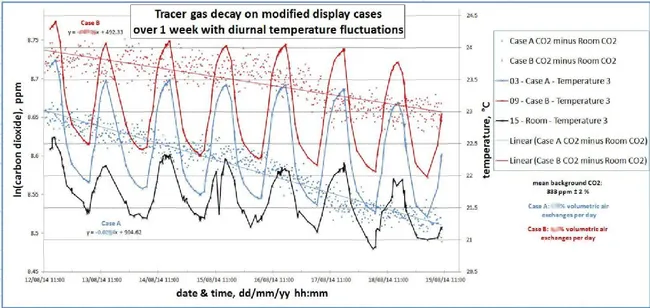 |
| Evaluating case airtightness prototypes by the tracer gas decay method while cycling temperature |

James Crawford BAppSc (Cons. Cult. Mats.) MCons (App. Cons.) MPhil (Phys.)
Supervisors
Prof Mark Dowsett University of Warwick
Prof Annemie Adriaens Universiteit Gent
Advisor
David Thickett English Heritage
Collaborators & funders
 |
|
Contacts
| jamesbcrawford76 at gmail dot com |
| J dot B dot Crawford at warwick dot ac dot uk |
| Tel: +44 (0)24765 72840 |
| Mob: +44 (0)7514 807 366 |
| Fax: +44 (0)24761 50897 |
| Skype: james.b.crawford |
| Department of Physics |
| University of Warwick |
| Gibbet Hill Road |
| Coventry CV4 7AL |
| UNITED KINGDOM |

